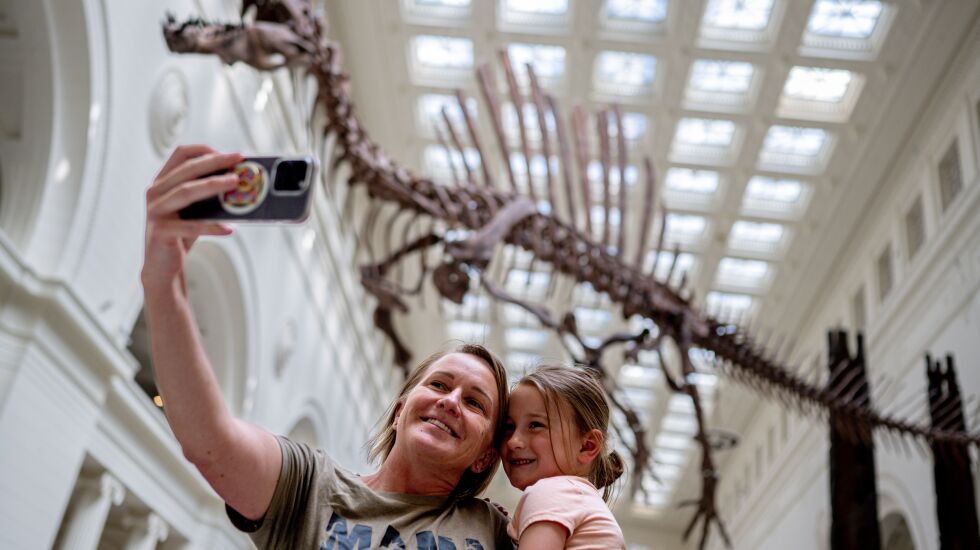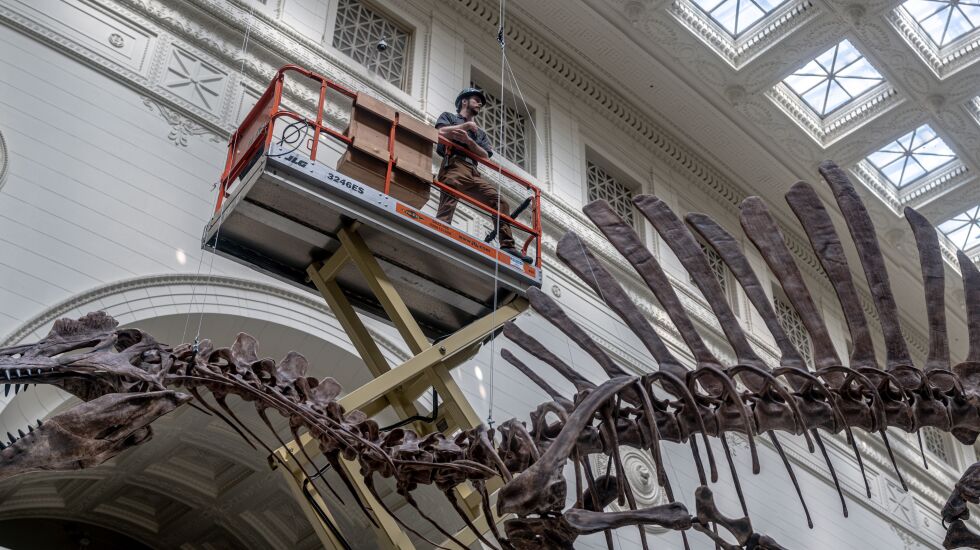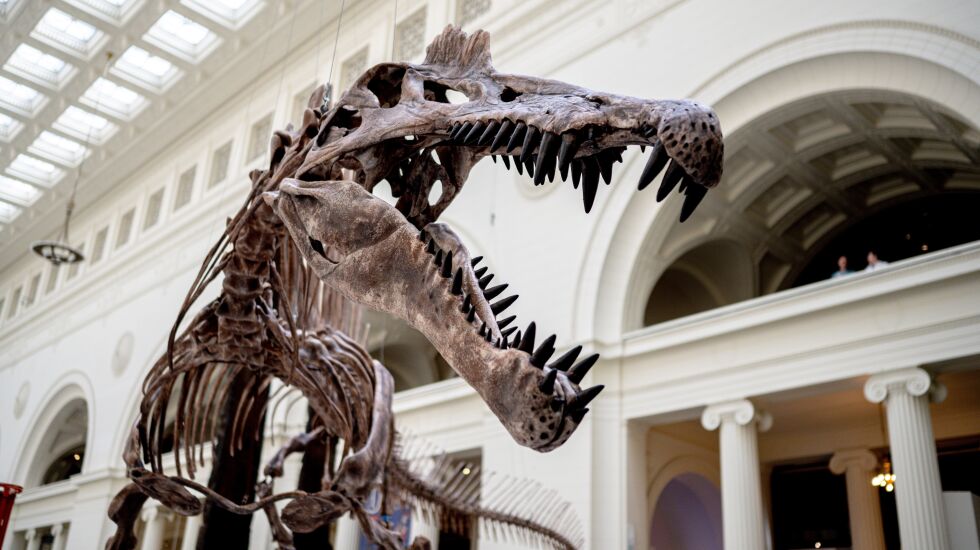
Its arrival had been a closely guarded secret for months.
Then finally, on Friday, the Field Museum prepared to unveil the largest predatory dinosaur ever discovered — when one of its 2-foot-long tail bones snapped.
Panic? No, the team that constructed the Spinosaurus cast on a 3D printer in Italy, grabbed some powdered glue. They mixed the glue with the only liquid on hand, Italian espresso.
“It was quite funny to see a team of Italians use Italian coffee to put together a skeleton,” said Matteo Fabbri, himself a native Italian and a Field scientist who helped dig up the specimen’s original fossils in the Sahara Desert.
The espresso delivery “was our condition to start work at 4 a.m,” Fabbri said.
About six hours later, the repaired 46-foot-long Spinosaurus specimen was hoisted 12 feet into the air without a hitch in the museum’s Stanley Field Hall.

“Here at the Field, dinosaurs are our most beloved ambassadors,” said Field President Julian Siggers. “They open a gateway to science that, for many of our visitors, prompts lifelong learning and a life of curiosity and wonder.”
The Field is the only place in the Western Hemisphere to see the world’s “largest predatory dinosaur.”
The museum has been promoting the new dino as 6 feet longer than its superstar T. rex, Sue. But the Spinosaurus is of a more delicate build. It was a semiaquatic creature that lived about 95 million years ago, roaming the rivers of Northern Africa.
How do scientists know it spent a lot of time in water? It has an exceptionally long, paddle-like tail, a crocodile-like snout and dense bones — much like those of a hippo — that would have allowed the creature to sink to the bottom of a river to find food.
“Its ecology was exactly like a modern crocodile. It was spending a lot of time in water; it was probably bottom-walking. It was hunting in water,” Fabbri said.
The original fossil is housed at Hassan II University in Morocco’s famed city of Casablanca.
Even though the dinosaurs didn’t live in the same period, had they done so, Sue likely would have crushed her fellow carnivore.
“The bite was more powerful, and it’s also almost double the weight,” Fabbri said. “The T. rex remains the king among predatory dinosaurs.”








